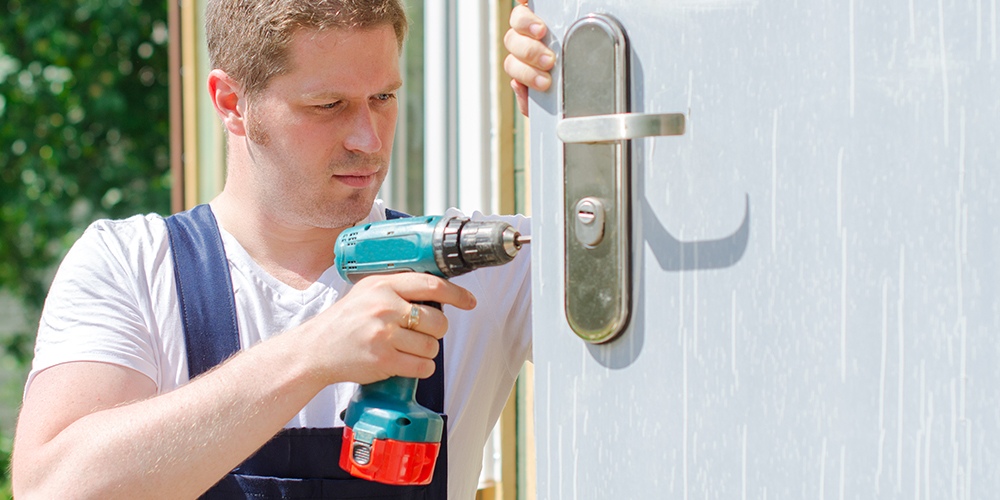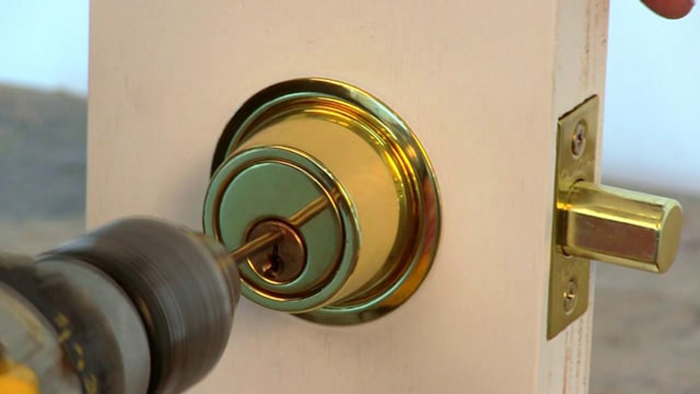Lock Blog
A resource for consumers, locksmiths, and security professionals
A resource for consumers, locksmiths, and security professionals

Drilling is a method of destructive entry, so it should normally be used after other unlocking techniques have been exhausted. That means that using it on a lock, will break the mechanism and require it to be replaced. For that reason, drilling a lock is a last resort. It should only be used when there is no other method available to open the locked door. It is not something to be rushed or charged into. Before drilling a lock, there are several things that must be considered. Only when a locksmith has fulfilled all of these requirements should the lock be drilled. It is important to follow the necessary steps to avoid destructive entry whenever possible. Drilling before this process is complete cannot be justified. This article is intended as an educational tool for locksmiths and potential patrons choosing a locksmith. Being informed on how the process should be handled will give proper insight to prevent the locksmith from making a mistake, or the client from getting inferior or unnecessary service.
Raking should be the first method attempted for a lock that does not have any security pins, or that the locksmith is uncertain about. If the lock does have security pins, then raking it will potentially give the technician a false set. That false set must be maintained, by keeping tension on the plug. It is at this point that the locksmith may rock the lock, bitch pick it or begin the attempt to single pin pick (SPP) the device. While attempting to do these things, the locksmith will adjust the tension from greater to less, troubleshooting as they go. If no method of picking can be used to open the lock, move on to other tools. If a pick gun (electric or manual) is present, then that should also be used. Make sure that the lock is being tensioned properly and that time is not being wasted. If the lock is not giving any feedback or the locksmith cannot feel what is happening inside the apparatus, then there is no need to continue. If no progress is being made with a method of picking, it should not be continued for an extended amount of time.
Depending on the preference and skill set of the technician, as well as the type of lock, this might be the first method attempted. The bump key has been placed appropriately outside of the lock one click shallow of being fully inserted before each strike, and the bump key has been struck correctly for some time. If it has been more than a minute then this method is not going to work (other than by sheer luck). At around 30 seconds, with around 20 strikes (more or less) with a standard bump key, this is a pretty fair indication that this method will be ineffective. With a modified bump key, complete with a filed down shoulder and rubber washers, taking a full minute will have yielded hundreds, or even thousands, of tries. If a modified bump key has been used for a minute then any time spent after that will be relying on a large amount of luck. If no attempt has been made to pick the lock, now would be the time. While picking, the technician should try to feel if there is any problem with the inner workings of the lock.
The door has indeed been found to be locked, along with the surrounding windows. On a check around the location, no door could be found to be unlocked. There was also not another door that could have been picked or bumped successfully. Under the doorway tools and the like proved to be useless. There is simply no other way of getting this person back into their house, aside from using destructive entry. The time has been taken to address the situation fully and this decision is not being made out of haste or pressure. At no point should the lock be drilled if there is a way of entry that excludes harming the property of the client. All other options have been exhausted and at this time the only remaining alternative is to have the locksmith drill the lock. When this decision has been reached the client should be informed and make the choice of proceeding or not.
Once the customer has been informed of the situation they should not be pressured into having the lock drilled. The situation at this point is simply that there is no other way. The time expended, and the effort taken should be enough to get the truth across. When the locksmith has confirmation from the client they may proceed to drill the lock. If the customer has not been informed of this decision, then it is not acceptable to begin drilling the lock. Until consent is given to the locksmith, no further action should be taken. If the offer to drill the lock is declined, then the technician should not advance further in the process.
Drilling the lock should not take place until a suitable replacement can be obtained and the new lock installation can run smoothly . The client should be given a selection of replacement locks to choose from. If no suitable replacement can be found, consider drilling and replacing a different lock. In the event that no other lock can be accessed, and no suitable replacement can be found, the lock should not be drilled. By drilling the lock, the security will be defeated. A locksmith should not leave the property without fixing or replacing a lock that they have broken. Drilling without replacing the hardware will result in an unacceptable gap in home security. When a replacement lock can be found, then the lock can be drilled open.

Certain locks are not going to open as easily as others, even with drilling. There is no point in drilling a lock that has anti-drill pins. These type of pins are made out of hardened steel so that they are harder than the drill bit. Something like a euro profile cylinder must also be given special consideration. If the last pin is passed through, and the drill penetrates into the rotating cam (almost always made of plastic), then the plug turning will not unlock the door ever again. Without understanding the locking mechanism, it is counterproductive to drill the lock. Pressure from the client should not be a valid excuse for attempting destructive entry on an unknown lock. A lock that is drilled unsuccessfully is a waste of materials and time. Do not be afraid to drill a lock, but know when doing so will not be help full. A lock should be located on the perimeter of the home that can be drilled.
If all the requirements have been met, then the client will be back in their house with safe and secure new locks. Checking off all six of these steps is also going to protect the locksmith from delivering low quality or inferior service. When everything is done right, then nothing is done wrong. Contact a locksmith that understands the severity of drilling a lock. Do not settle for substandard work as a customer or a technician. Whether it is a local locksmith or a major brand, quality is quality and they must provide you with excellent customer service. If the caliber of service dips during the drilling process then it may lead to further property damage or physical harm. These are power tools, and require the proper safety gear to be worn while in use. The customer can be present for the work, but they should have the appropriate protective gear, relative to their proximity to the lock being drilled. Remember: safety, quality, and care. With those three things in mind, everyone can be protected.
Category: Commercial, Residential, Tools of the Trade